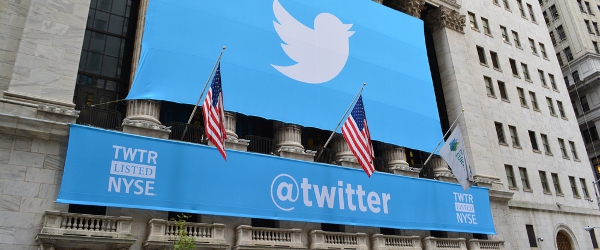
Shares in Twitter have plummeted more than 10 pence as the social network giant reported a slowdown in user growth, instilling further fears that its bubble may burst.
Despite the service having doubled its revenues to $250m (£148m), the indicators are clear that the website is losing its impetus.
The number of users was up by 25 pence to about 255m in the first quarter of 2014, showing the retardation of growth from the previous quarter’s 30 pence.
Twitter’s chief executive, Dick Costolo, fanned away doubts however, saying the results indicate a "very strong first quarter".
"Revenue growth accelerated on a year over year basis fuelled by increased engagement and user growth. We also continue to rapidly increase our reach and scale," he said.
Experts and investors were not convinced though, and pulled out of the San Francisco based company which in turn sent shares down to $37.79 after hours. This is the lowest Twitter shares have been at since the company went up for IPO in Novemeber 2013.
Chris Beauchamp, a market analyst at IG, was also cynical of Costolo’s optimism.
"Twitter may have doubled its quarterly revenue and beaten analyst expectations but akin to iPhone sales for Apple, user growth is the key tenet for the social media company. Growing a mere 25% to 255m, lower than the 30% growth achieved the previous quarter tends not to inspire investors looking for a profitable company with big potential," he said.
Twitter stunned investors last year when it was valued at $14bn in its initial public offering, with that price then rocketing by 75% on the first day of trading. But by close of business on Tuesday, it had fallen to $24.2bn.
One of the most worrying revelations from Twitter’s first quarter was its advertising revenue. Twitter managed to make $1.44 in advertising revenue per 1,000 timeline views, which is down from $1.49 in the previous quarter. Advertising revenue is at the crux of Twitter’s ability to make money from its existing user base, and with that figure dropping, coupled with the slowing of the user base,
Beauchamp added: "While ad revenue appears to be on the up and potential to expand internationally is an option – social media is becoming a competitive space. Its perhaps clear now that the share price was exceptionally toppy since the IPO date and shareholders reminiscent of the demise of MySpace will be conscious of how a popular trend can quickly lose its appeal."
So what can Twitter do in this situation? There are two obvious options:
1) Attempt to reach a massive amount of new users. Despite only making $1.44 per 1,000 timeline views, increase the amount of timelines being viewed and it will get more revenue.
2) Develop the ability to generate much more revenue from the users it already has. Even if the user base does start to drop, upping amount of advertising revenue it gets will no doubt help Twitter.






